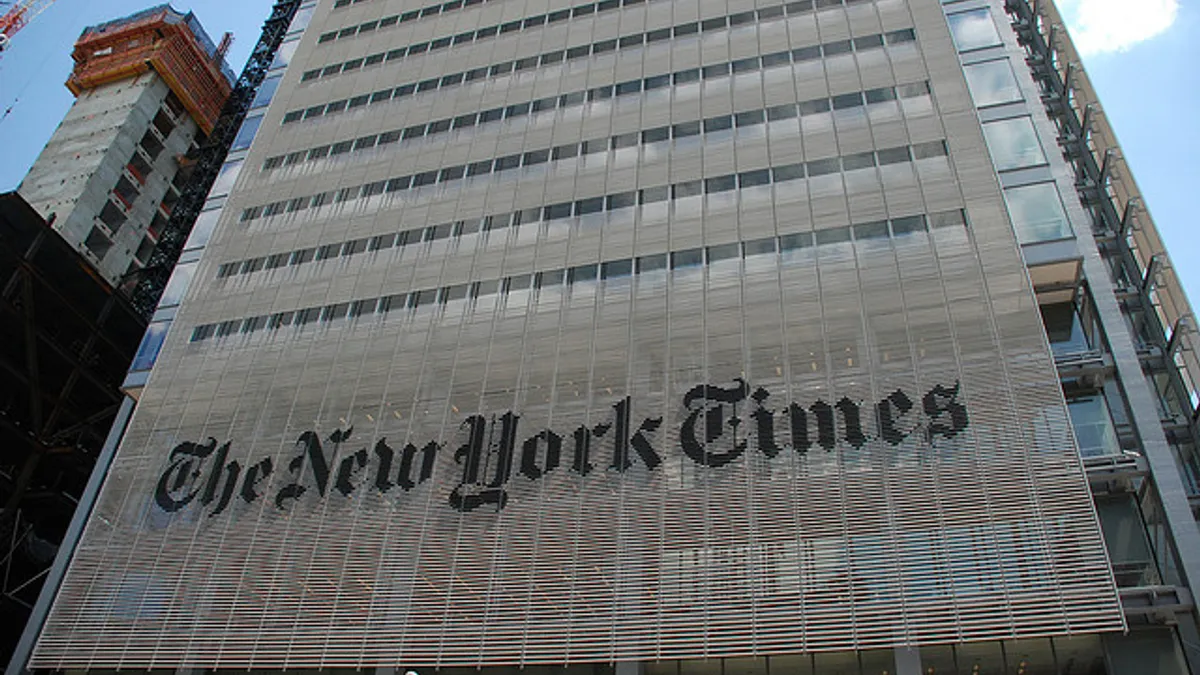Dive Brief:
- The New York Times is beginning to phase out banner ads in favor of its proprietary native display ad format Flex Frame Everywhere, according to The Wall Street Journal. The change will occur across devices, from desktop to mobile.
- Banner ads will now only be seen on 30% of desktop webpages, with that number expected to continue to decline, according to Times Senior Vice President of Advertising and Innovation Sebastian Tomich.
- The Flex Frame format will appear at the top of webpages, between paragraphs and in content feeds across the Times’ sites, and is dynamic, adjusting in size and layout to accommodate different devices and window sizes.
Dive Insight:
Most big marketer brands and social platforms figured out the value of native long ago, and the media now seems to be catching up, though the transition might take awhile.
“The way advertisers are using Facebook is very native, for example, but you haven’t really seen many publishers using that model,” Tomich told the Journal. “There’s a good amount of negativity around the display business in the market now, but it’s a staple for us.”
The broader move towards native ads reflects the influence that mobile is having on digital content. Banner ads are particularly onerous on a smartphone's small screen. Smart publishers are looking to enhance the ad experience as use of ad blocking software grows, a trend that is biting into their revenue. Eliminating banners is one way to achieve this goal.
Earlier this year, Facebook tested various ad formats and determined that banner ads were “valueless", eventually dropping the format from its ad exchange in favor of video and native ads, which it claimed were the only two models that delivered value for advertisers and end users.
The Times is looking to allow marketers to buy Flex Frame ads programmatically in the future. Because the format is native and dynamic — and presumably an upgrade from stagnant banners — it is expected to command a premium price.














